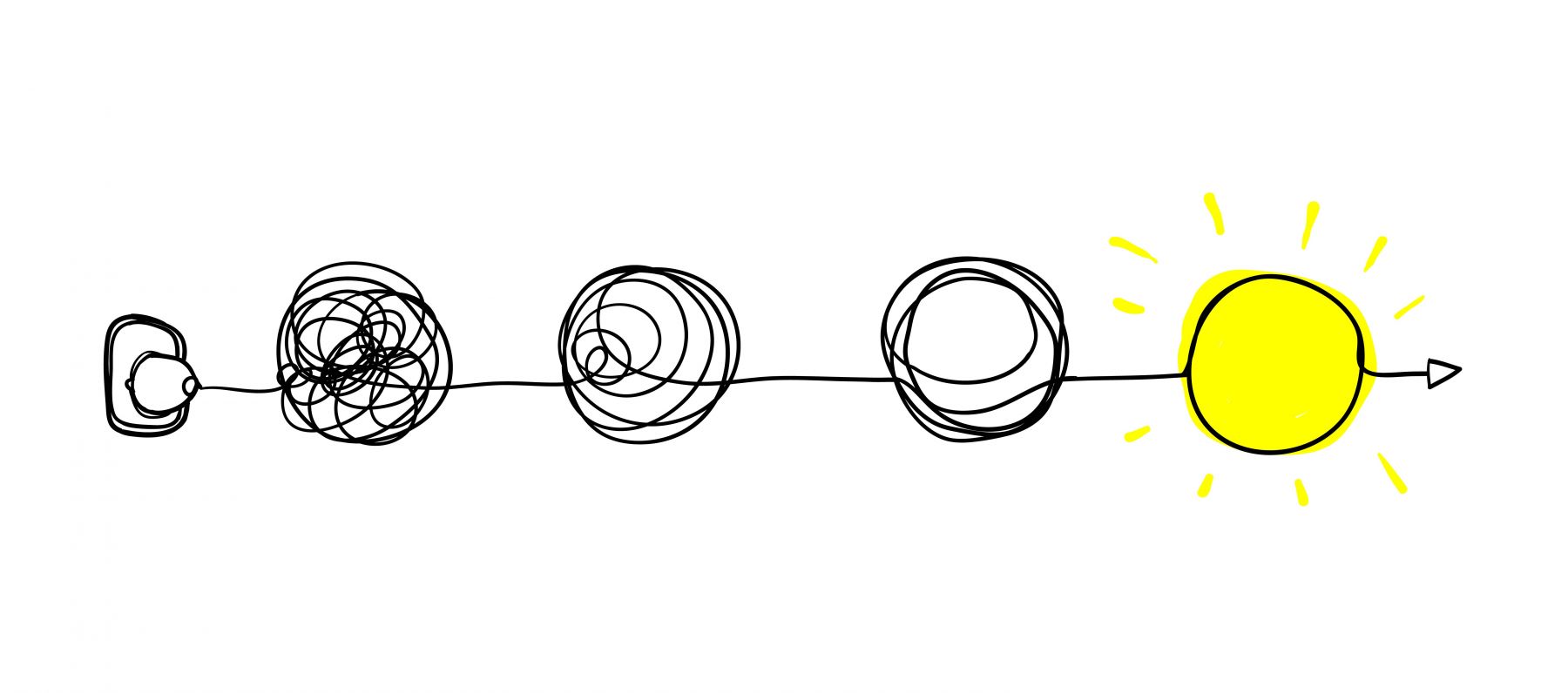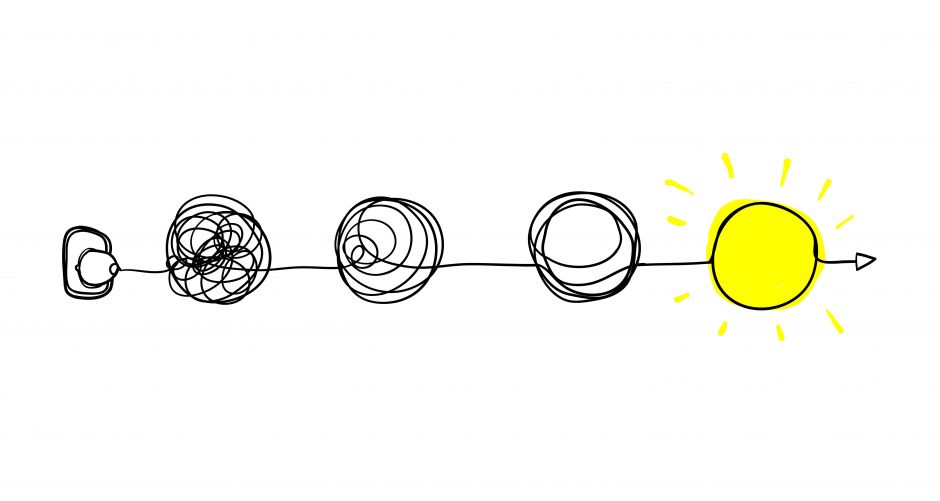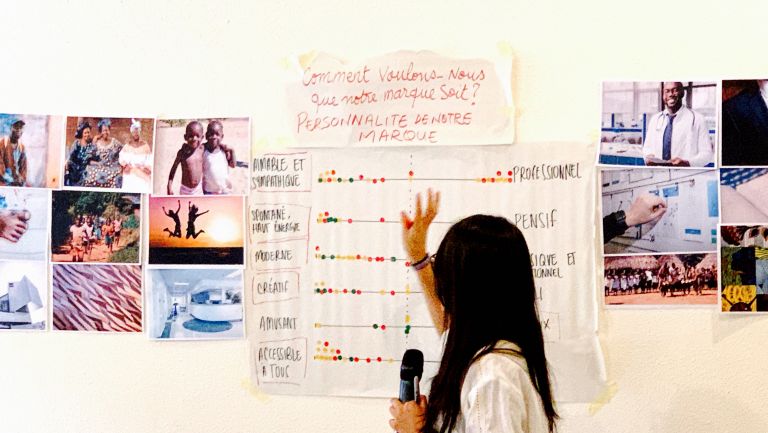Sign up for our monthly newsletter

Here for the Magic...A co-designer's journey
Design can feel messy, chaotic even. But in the end it is worth it. As designers we know this because we have seen it work, time and again. But explaining the design process and the feelings that accompany it to the uninitiated can be another thing entirely.
It’s a common experience. You’re in the throes of a divergence phase during a co-design workshop and you hear the vaguely frustrated, slightly exasperated, and sometimes frantic cries of “Where is this all leading to?”
Yeah. You know those times.
Managing the highly dynamic, ambiguous, and ever-flexible human-centred-design process is practically a designer rite of passage. But communicating the value and merits of such a process can pose a number of challenges, particularly in those instances where our co-designers don’t have the benefit of experience that we as facilitators may possess.
So why do we argue so much for the value of design? Why do we continuously advocate for a novel, trying, and at times, downright uncomfortable process over something more traditional, formulaic, and safe?
I would propose that we do it for the magic.

You know what I’m talking about. That proverbial lightbulb that goes off as a co-design participant begins to connect the dots in a larger pattern she had never before considered, when a client realizes that their strategy didn’t work not because of a lack of competence, but because it did not take into account a crucial cultural component.
When your participants walk in with a laundry list of their assumptions, prejudices, and safe, formulaic targets of what they “should” be doing and leave with a newfound vision of the impact their sector could have which surpasses every one of their expectations.
Getting to these moments can be far from easy but it is important. And as human-centred designers it’s also important to realise that the areas where we can make most impact can often be those where the people we wish to collaborate and co-design with have least experience with our methods.
In an attempt to make sense of this inherently uncertain process and to illustrate the co-design journey towards attaining these magic moments, I presented the following model from The Wealth Hike during a recent collaboration co-design workshop on behalf of Breakthrough ACTION Guinea, where the design team was attempting to strengthen collaboration among local community health agents and formal healthcare providers to increase synergetic action while amplifying their collective impact.

Comfort zone
Where we all begin. Our favorite place to be. Everything is safe and predictable. Participants understand how to work and what is expected of them. They can shine in front of others and bask in the glow of commonly shared norms, beliefs, and opinions.
How to spot it: Confident responses, use of previously-created systems and frameworks
In Guinea this looked like a steady stream of raised hands, lots of talking, and focusing on small, easy-to-control outcomes such as how something is phrased rather than messier big-picture critical thinking challenges.
Panic zone
This zone is characterized by the making of excuses, participating in complacent group think, and doing everything possible to regain control by “outsmarting” or reverse engineering the design process. Most prominently, it is characterized by self-doubt as participants begin to question if they are doing things “correctly”. It can be an intensely personal zone and one which every designer must navigate.
How to spot it: While all co-designers react differently, you can typically register the panic zone through periods of silence, resistance to providing responses, and tendencies to fall back into what they know and are aware of.
In Guinea, panic zone moments were filled with silence, participants arguing with facilitators over how activities were conducted, and resistance to provide concrete and actionable responses even when pressed.
Learning zone
After some time sludging through the discomfort of the panic zone, things slowly (or sometimes suddenly) begin to come into place. Mindsets begin stretching as designers start viewing things from novel and unexpected perspectives. The root issues impeding progress and some of the entrenched barriers to growth begin to come into view as well as a better understanding of how best to position solutions towards optimal impact.
How to spot it: Participants in the learning zone may begin taking a step back to view the bigger picture, challenging each other’s safer ideas or proposals, and reiterating the process and how each set of sequential activities was designed to lead the group to this point.
In Guinea, the learning zone moments occurred when people became vulnerable and open to speaking about some of the deeper entrenched and systemic issues that occur as well as some of the intangible forces guiding them such as jealousy, lack of trust, and fear.
Magic zone
Also known as the growth zone, this is the grand crescendo that ushers in the deepest insights, the strongest pattern recognition, and the downright impressive synthesis as problem definitions, ideas and prototypes reach their fullest potential. This zone requires no description; when you’re in it, you’ll feel it.
As facilitators, watching others go through this process can be challenging, and yet the moment the magic comes into play, immensely rewarding. For here, lies the true value of design, uncertainties and all.
By normalizing each of these phases as necessary and commonly experienced in order to attain those truly insightful moments of realization, you as a designer make what can sometimes feel like a lonely and foreign experience, one in which all participants involved feel they are part of a larger community of learners making just as many false starts, missteps, and iterations.
So, forget about predictability and certainty.
I’m here for the magic.







